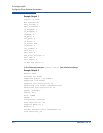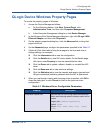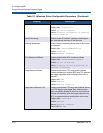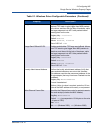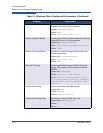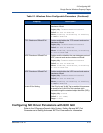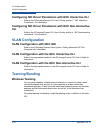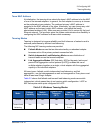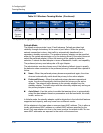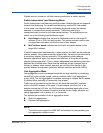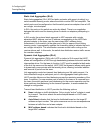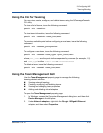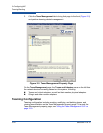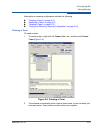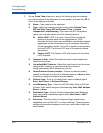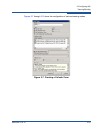
2–Configuring NIC
Teaming/Bonding
2-16 SN0054671-00 B
Failsafe Mode
The failsafe mode provides Layer 2 fault tolerance. Failsafe provides high
reliability through redundancy in the event of port failure. When the primary
network connection is down, data traffic is automatically transferred to a
secondary, standby connection. The preferred primary adapter can be specified
either by the system administrator or by the teaming driver (if the admin does not
select the preferred adapter). When the teaming driver needs to make the
selection, it selects the best adapter in terms of bandwidth, health, and capability.
The preferred primary must always be a QLogic Adapter.
The administrator can also choose one of the following failback types to specify
the behavior when connection to the preferred primary is restored after a period of
failure:
None—When the preferred primary becomes operational again, the driver
does not automatically switch back the primary to the active adapter.
Preferred Primary—When the preferred primary becomes operational
again, the driver automatically switches back the primary as the active
adapter. The network traffic resumes to the primary adapter from the
standby adapter. The traffic stays with the secondary adapter only as long as
the primary adapter is down.
Auto Select—Use this option to enable the teaming driver to automatically
select the best adapter based on parameters such as bandwidth, link state,
health, and so on.
In failsafe mode, the standby adapter could be dissimilar in the individual features
supported and capacity, and may come from a different vendor.
All the adapters in the team share a common team MAC address. This is either a
locally administered MAC address or a default MAC address specified by the
driver. Only one adapter at a time in the team is active for network traffic. No two
same MAC addresses are exposed to the switch at the same time.
Static
802.3ad
Yes Yes Yes Yes 2–16
Dynamic
802.3ad
Yes Yes Yes Yes 2–16
a
16×16 ports can be aggregated per system: 16 ports per team and 16 teams per system.
Table 2-2. Windows Teaming Modes (Continued)
Mode
Failover
Capability
Switch
Dependency
System Fault
Tolerance
(SFT)
Load
Balancing
Number of
Ports per Team
(Range
a
)



